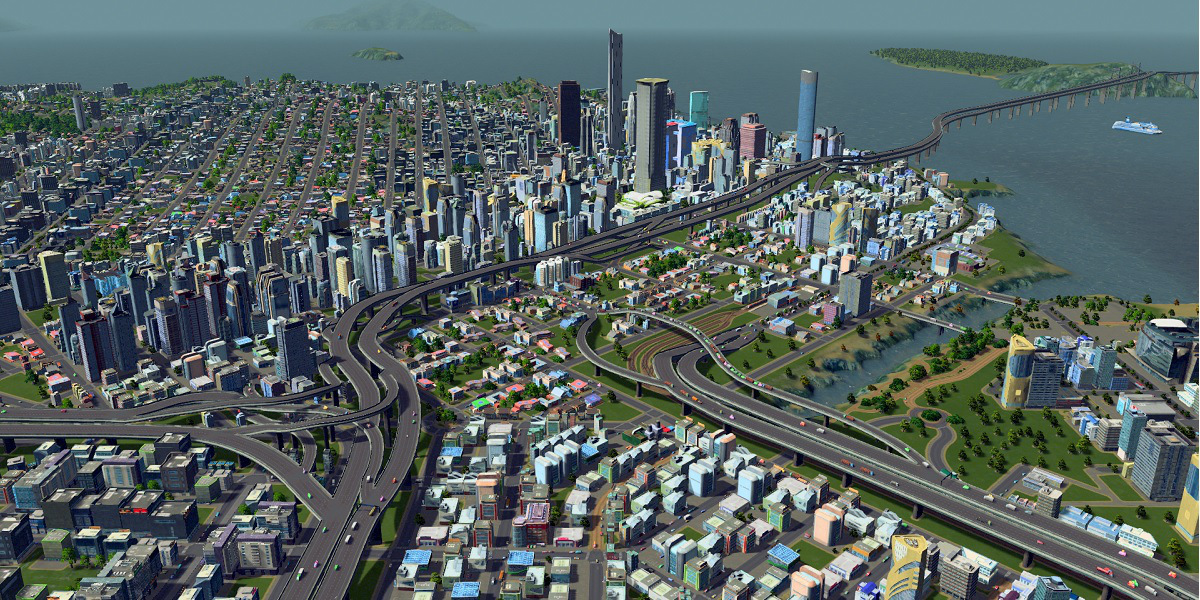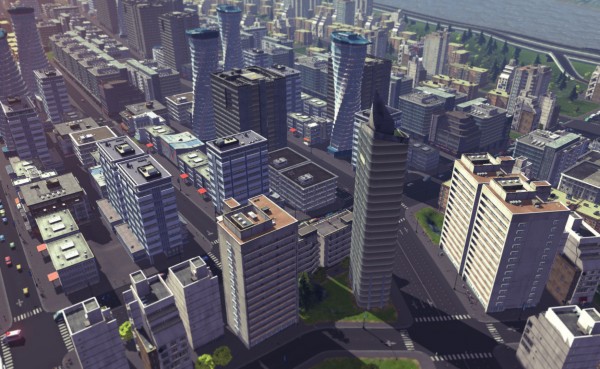The city building / management genre has always held a special place in my heart since I played Sim City 2000 back on the Super NES back in the early 90s. After the Sim City disaster a few years ago the genre has certainly seen better days. Can Paradox Interactive revitalize this troubled genre with this latest release? If planning out residential zones, parks and city services sound entertaining to you make sure to keep reading.
First and foremost Cities: Skylines isn’t trying to reinvent or reimagine the core tenants of other city building games like Sim City. When building your city you’ll still begin by plopping down a power plant and zoning residential, industrial and commercial districts. In addition to the three types of zones there are special kinds of zones unique to Skylines including dense versions of the basic three where larger structures are constructed as well as zone reserved for high tech office towers. The transition from low density zones to high density zones makes the late stage gameplay more about controlling your cities’ density than completing pre-defined objectives.
Skylines’ road tools are absolutely fantastic and provide potential mayors with a number of different options when it comes to laying down pavement. You are not confined to placing straight roads or pre-defined boxes. A built-in angle system allows you to design twisting and turning roads to your hearts content and if that is not your thing there are a number of pre-built road structures that will give each of your neighborhoods a unique look. I had quite a bit of fun planning out the roads for my first city, however managing traffic flow can be frustrating especially when you have to bulldoze the local medical clinic to make room for a four lane highway to clear up congestion.
Placing zones and roads will only get you so far – you’ll need special buildings to set your city apart and thankfully Skylines delivers. There are literally dozens of special buildings from stadiums to large office towers to amusement parks available for successful mayors to build. In order to unlock these rewards you’ll need to meet certain population requirements and despite the aforementioned lack of single player objectives I found these reward buildings as the perfect carrot on a stick to keep me playing.
While planning my first city I hit a bit of a plateau in terms of population / cashflow ratio. The three colored bars that indicate the demand for residential / commercial and industrial bottomed out and no strategy that I could come up with would spur growth in my little burb. Skylines gives you a lot of different tools to play with including the ability to create different districts within your city with their own tax rates and policies. This allowed me to create a booming industrial zone to the western side of my city and a more highly taxed dense set of residential high rises in the core of my city. Large cities can quickly become a bit of a nightmare to manage when growth begins to tank and you have ten different districts with their own policies and needs.
Despite a few nitpicks here and there – including the lack of an ability to automatically bulldoze abandoned buildings and no pre-defined end game – Cities: Skylines is an absolutely fantastic city simulator. If you are looking for a city simulator with moderate system requirements, large maps and a lot of micromanagement including the ability to plan bus routes than Skylines is the game for you. It is easily to get lost for hours in the planning and perfection of your own metropolis.


